Gather ‘round for an amazing game night with a collection of classic board games. These games are perfect for a family game night, offering fun and engaging activities for both children and adults. You’ll love the dice rolling, card playing fun with tiles, meeples, and more involved in the games that remain true favorites after decades. Note that we’ve determined “classic” applies to games 25 years or older, meaning most likely your parents or even grandparents enjoyed these board games at some point in their young adult life – and they probably still love them and play like they did “back in the day.” They’re popular classics for a reason!
What Makes a Classic Game?
A classic game is one that has stood the test of time, remaining popular and enjoyable for generations of players. Several factors contribute to a game’s classic status, including its timeless theme, simple yet engaging gameplay, and the ability to appeal to a wide range of players. Classic games often have a unique mechanic or twist that sets them apart from other games, making them memorable and iconic. Additionally, classic games are often easy to learn but challenging to master, providing a sense of accomplishment and satisfaction for players. Examples of classic games include Chess, Checkers, and Monopoly, which have been enjoyed by players for centuries.
Benefits of Playing Board Games
Playing board games offers numerous benefits for individuals of all ages. One of the most significant advantages is the social aspect of board games, which encourages interaction, communication, and bonding with family and friends. Board games also provide a healthy escape from the digital world, promoting face-to-face interaction and reducing screen time. Furthermore, playing board games can improve cognitive skills such as strategy, problem-solving, and critical thinking. Classic games like Chess and Trivial Pursuit can even enhance memory and knowledge retention. Moreover, board games can help reduce stress and anxiety, promoting relaxation and enjoyment. Overall, incorporating board games into your leisure activities can have a positive impact on your mental and emotional well-being.
The Nine Best Classic Board Games to Delight and Entertain
Rummikub
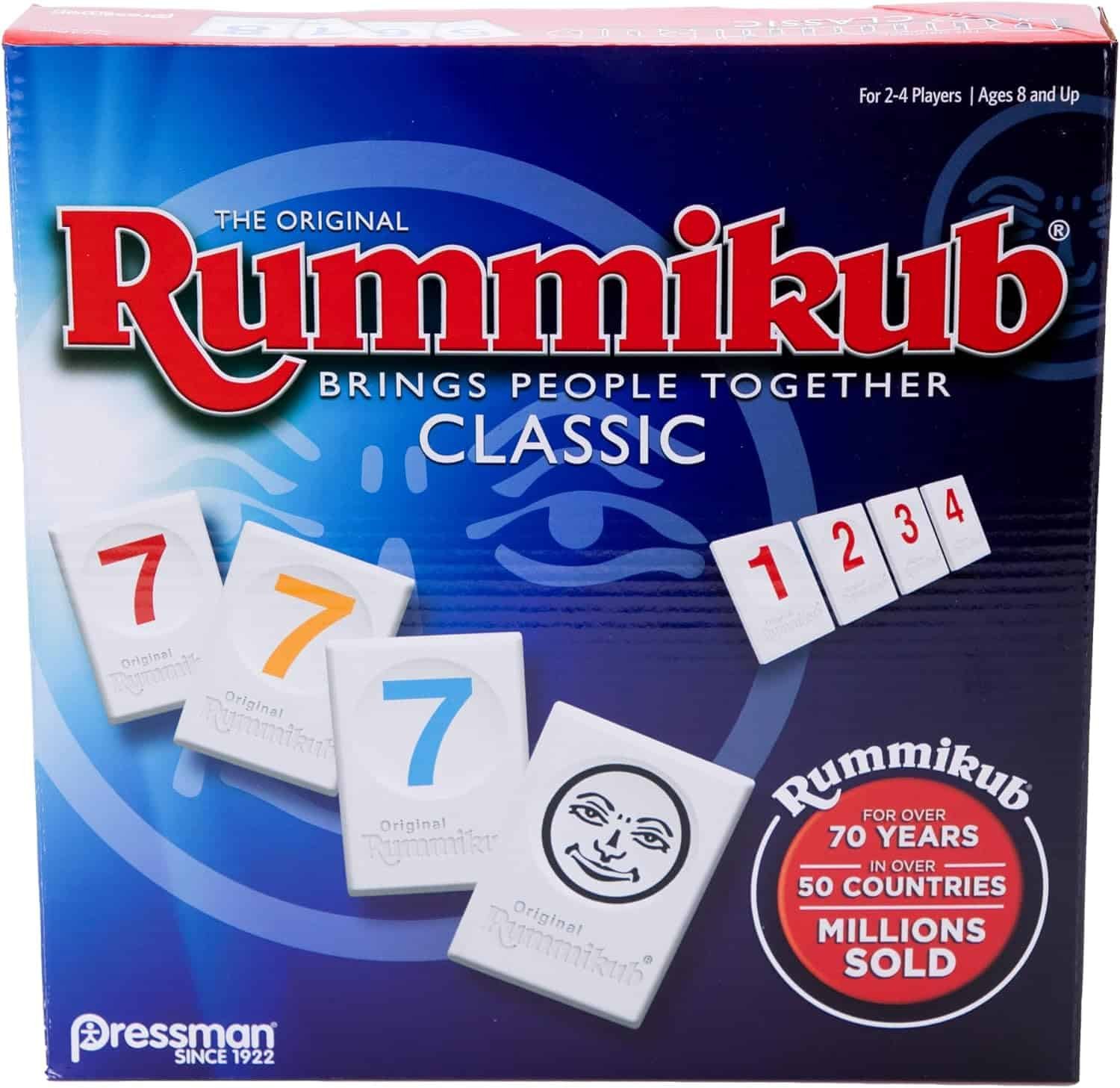
Age: 8+ Players: 2-4 Time: 60 minutes
Similar to numerous card games from central Europe, Rummikub has become a massively popular original game since its original release in 1950. The tile game came from Romanian toothbrush salesman, Ephraim Hertzano, after card games were outlawed under Communist rule. The unique take on familiar games allowed players to enjoy the qualities they loved in cards without the threat of jail time or fines. The game saw eventual export from Europe with its first official rules first published in 1978. Rummikub has remained a popular, family-friendly classic board game since, with easy-to-follow rules, fun, competitive gameplay, and simplicity enjoyed by folks of all ages.
The goal of Rummikub is to get rid of all your numbered tiles by forming number runs of 3 tiles or more, or collecting and laying down 3- or 4-of-a-kind hands. The tiles each contain numbers in one of four colors (blue, orange, black, and red) and make gameplay easy to follow for most folks.
Clue
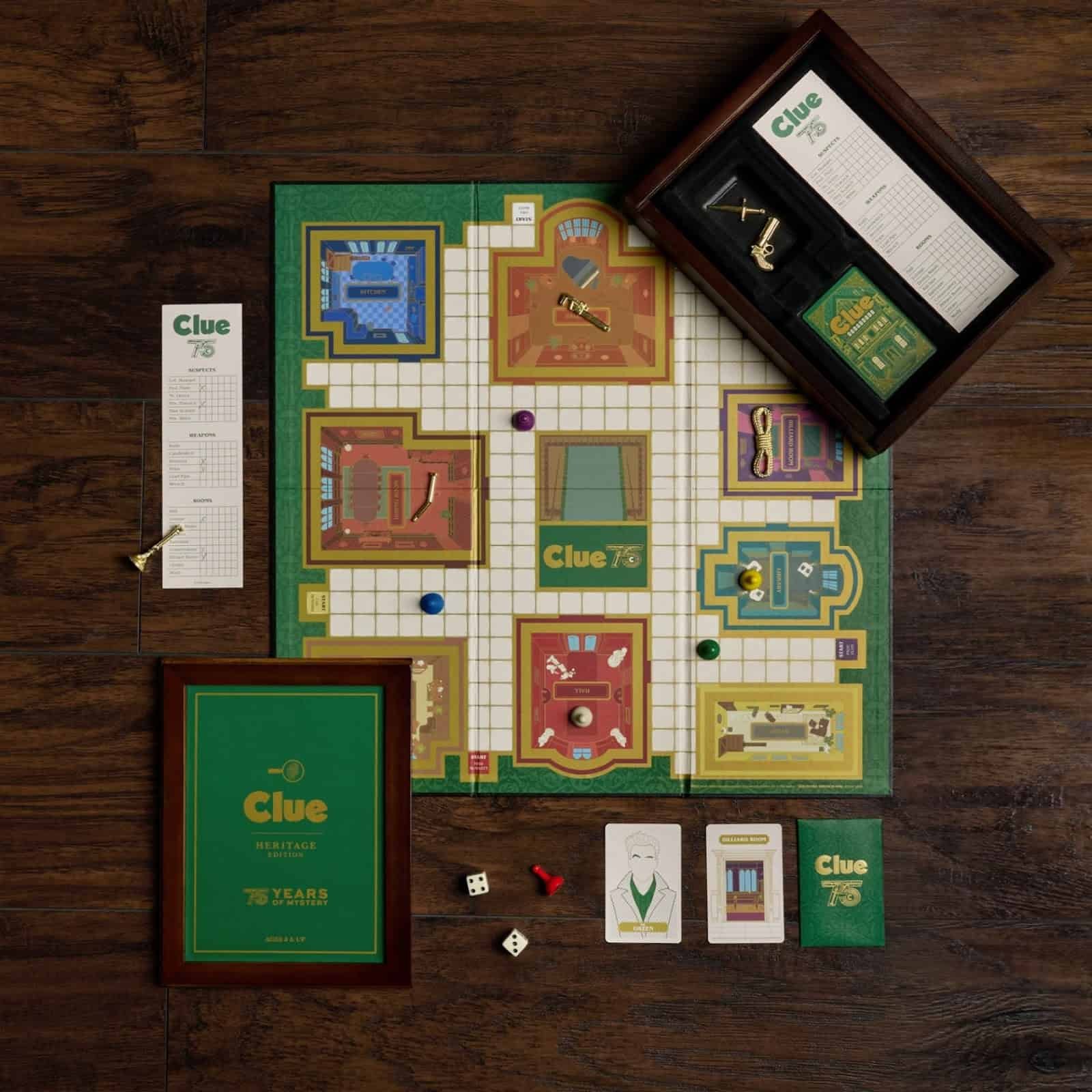
Age: 8+ Players: 2-6 Time: 60 minutes
As far as many are concerned, Clue is the game that started it all in the whodunit genre of board games. The classic game was originally released in 1949 and has been running strong ever since. For many, this accessible mystery game was the first dive into anything strategically more advanced than Monopoly and has remained a favorite and forever popular choice.
You can, of course, find Clue in many new iterations – ranging from Harry Potter versions to the grown-ups-only fandom variation of What We Do in the Shadows Clue. But just in case you’ve never played this classic and want a Clue on whether or not to grab a copy for your board game closet, the game is pretty simple. At the start of the game, one character, one weapon, and one location card are dealt into the Confidential File where the secret is held until the game’s conclusion. Players must then move from room to room, making suggestions of whodunit, with what, and where, deducing through eliminations of accusations hurled against each other. Those accused must reveal one card only to the accusing player. Once you’re sure you know whodunit, you may propose your final accusation, check the confidential file, and either win by accurate deductions or wait on the sidelines for the remainder of the game if you’re wrong.
Risk
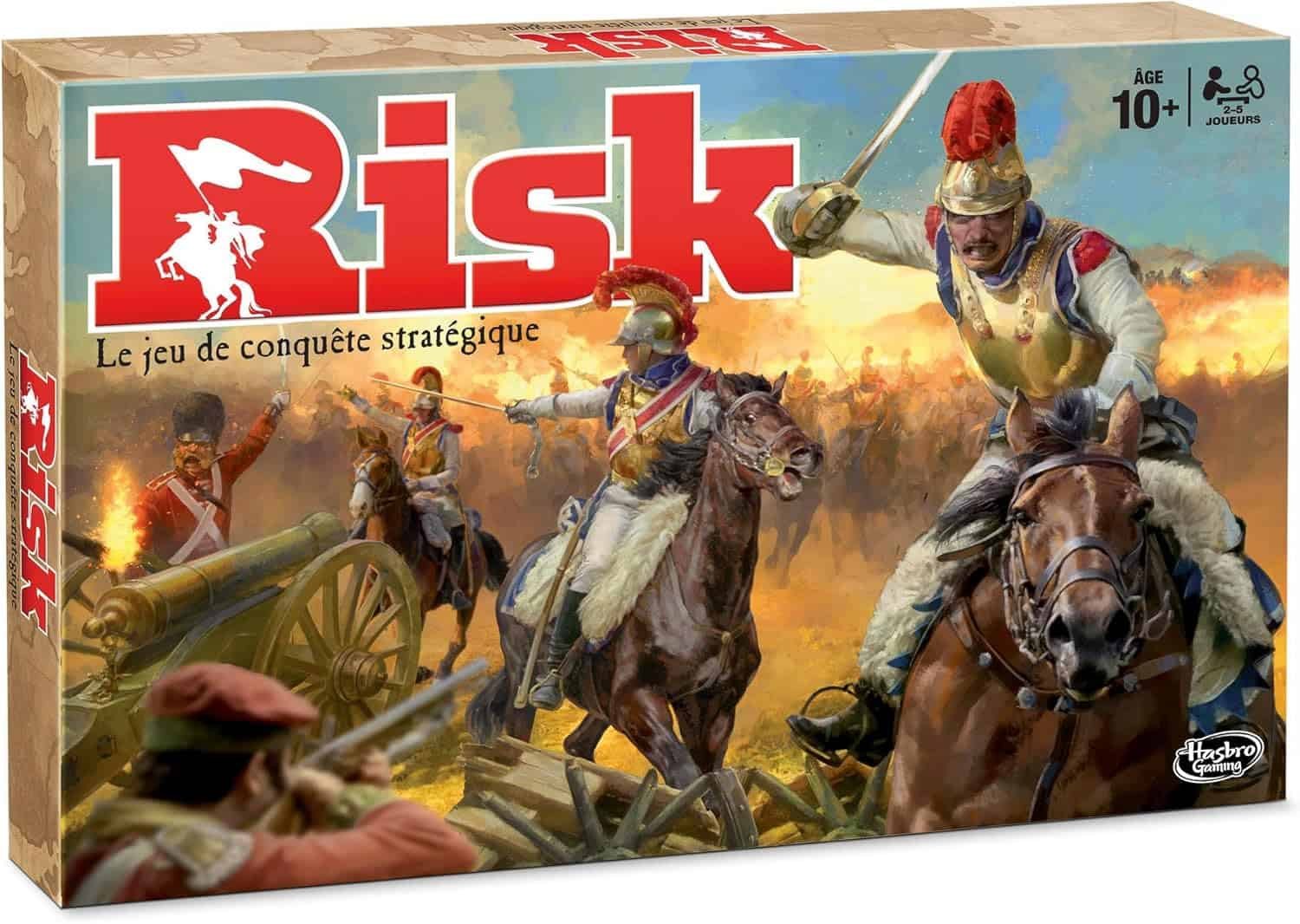
Age: 10+ (Community 8+) Players: 2-6 Time: 120 minutes
Probably the most well-known mass market war game, and remains one of the most popular, Risk comes in many iterations (from Risk: Lord of the Rings to Risk: 2210 AD and everything in between) but was originally released as a “standard” war game in 1957. The long-time popular game uses meeples, cards, and dice on a board to play out a “conquering the world” scenario in turn-based gameplay.
Each turn of this classic board game involves every player gaining reinforcements of their held territories, dice roles and potential drawing of cards. The heavily-strategic game also permits attacking other players in combat to see who will gain or maintain control of a territory, moving armies to adjacent territories, growing armies, or gaining bonuses through battle.
Setup for the game includes determining the order of play, issuing of armies, and allocating original territories to players. As the setup occurs, each player must begin their battle strategy, determining where to place their armies and how many in each territory.
It should be noted that this is an elimination game, so some players will not make it through to the end of the game. Games typically last up to 2 hours, but some have been known to last 3 or 4 hours, or longer, if players are both skilfully matched and luck runs “evenly” throughout with card draws and dice rolls. Sometimes players opt to form alliances to help with the lengthy gameplay or as a personal strategy that may help them secretly take out their own alliances to gain territory control midway through the game. So, beware of allies taking advantage of the game’s mechanics!
Escape from the Hidden Castle
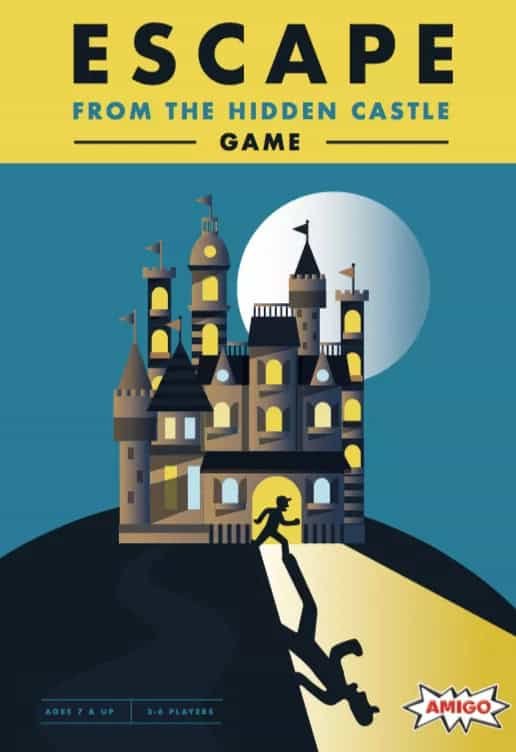
Age: 8+ (Community 5+) Players: 2-8 Time: 30 minutes
Escape from the Hidden Castle, Hugo, or Midnight Party may be dubbed as a children’s game, but this 1989 classic board game has become a staple for many board game lovers and remains one of the most popular classics for folks looking for something more “modern” than games like Monopoly or Risk. As a party game, it creates a fun and relaxed atmosphere, encouraging lighthearted engagement among players. The game gives players control of a given number of guests (dependent on how many players) at the castle. Players must then place these guests strategically around the board at the start. Once players have their guests placed, The Phantom (or Hugo the Ghost in earlier versions of the game) starts in the cellar and climbs toward the guest circle in the gallery. For the turns, each player rolls the custom die and either moves one of their guests the number rolled or the Phantom moves. This means that the more players you have, the faster the Phantom moves toward the gallery.
When the Phantom reaches the gallery, guests must move about to adjoining rooms to avoid Hugo, but only one guest per room is allowed. Any other guests not yet in those rooms must keep moving to avoid the Phantom. As guests are caught by the Phantom, fright points are added to that player’s score. Once all the guests are caught, fright points are tallied, and whoever has the fewest points wins the game.
Catan
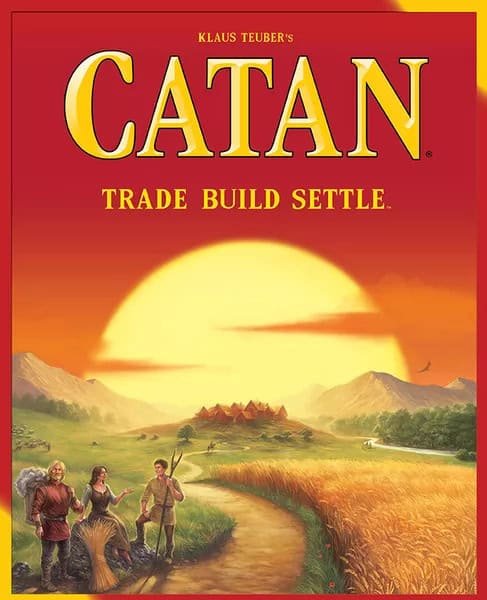
Age: 10+ (Community 8+) Players: 3-6 Time: 60-75 minutes
Catan, formerly known as The Settlers of Catan, first entered the world in 1995 and quickly became a contemporary classic. The tile-laying, trading, and development game uses resources like wool, ore, brick, animals, lumber, and grain to build roads, develop cities, and create rural settlements. Your goal as a player is to become the best trader, builder, or settler and dominate the isle of Catan with your prowess. Beware, though: robbers may steal your resources or fellow players may block your progress.
The game designed for 3 to 6 players uses dice, tiles, and cards for gameplay, allowing for both strategy and a bit of luck to move the game along. This means the classic board game has massive replay-ability options and keeps families and board gamer groups going for years to come.
Set-up involves randomized placements initially, with two settlement cards, and a small handful of resources allotted to each player. Turns consist of playing development cards, rolling the dice, collecting resources, laying roads, positioning, or upgrading cities or buildings. Players accumulate points by building and developing cities, growing the largest army, gathering specified development cards, or building the longest road. When a player has garnered 10 points (some are held in secret), that player can announce and claim the win.
- Engaging Gameplay: Dynamic resource trading and settlement-building.
- High Replayability: Modular board setup keeps each game fresh.
- Strategic Depth: Balancing negotiation and resource management.
- Luck Factor: Dice rolls can lead to uneven resource distribution.
- Player Downtime: Waiting for turns can be lengthy with more players.
- Component Management: Many small pieces can be cumbersome.
Samurai
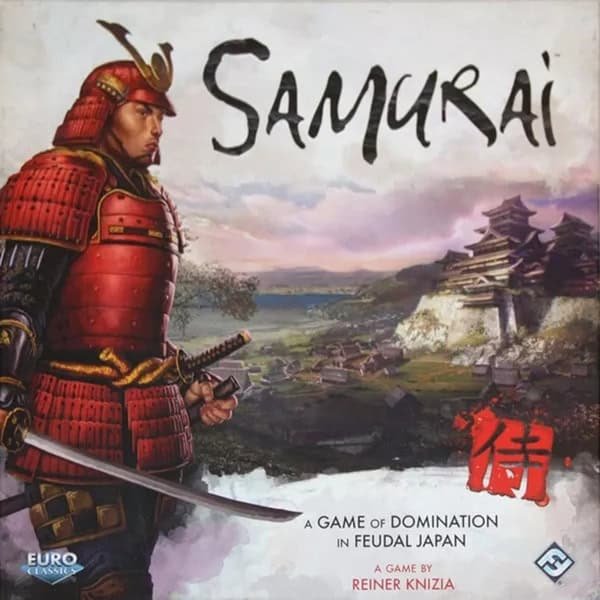
Age: 10+ Players: 2-4 Time: 30-60 minutes
Set in Medieval Japan, Samurai offers players the chance to compete for favor with three factions in the feudal country: samurai, priests, or peasants. The factions are represented by the rice paddy (peasants), the helmet (samurai), or the Buddha figures (priests), and are scattered across the board which shows off islands of Japan. This classic board game originated in 1998, introducing a new war-based gameplay system into the realm of board games, directly from Japanese creators with a love of hand management and tile placement.
Players must quickly strike with ships and horseback ronins or use long-play strategic methodology to garner favor with their chosen faction(s). When a given figure is surrounded, the player has gained that faction’s favor, and the figure is removed from the board and added to the player’s pile. Tiles are laid and gameplay continues until all symbols of one type of faction have been removed from the board or four figures have been removed via tied gameplay. At the end, players compare earned favors of each type to see who wins.
Bus
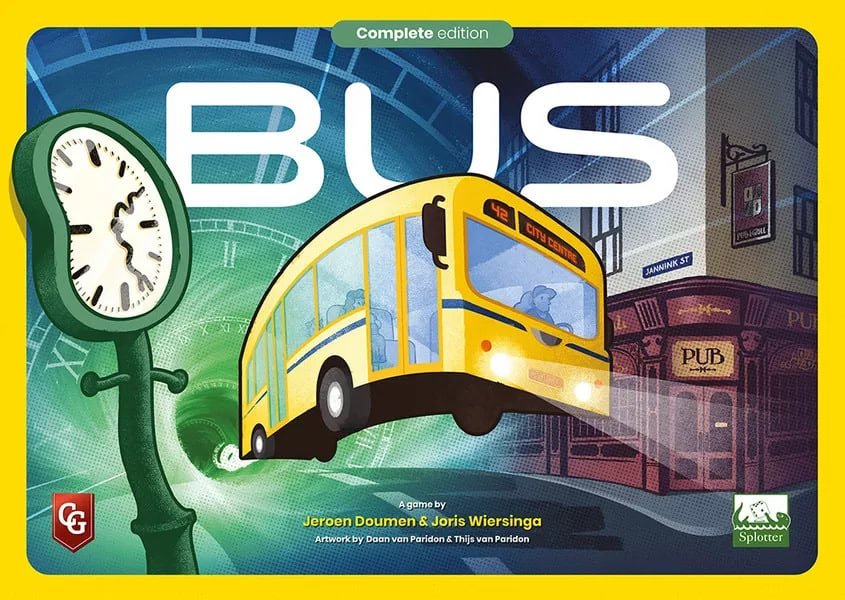
Age: 14+ (Community 12+) Players: 3-5 Time: 120 minutes
A group of students originated the idea for the now-classic board game Bus, a highlight from the game company Splotter Spellen. The game first hit the world in 1999. In this ridiculously fun game, players aim to get as many people to their destinations as quickly as possible. Route markers are placed to connect passenger routes to destinations from their train stations. But the type of destination varies from turn to turn (these may be work, venues, or home) and players must follow specific passengers along the way to get them to their desired final stop.
Players start the game with one bus but must build their routes, buy new buses, and develop their routes as the city expands throughout the gameplay. Strategies ensue when players compete against each other to develop the best, most effective route for getting their passengers speedily routed – but may be blocked by other players developing their routes. Other specific rules also apply in blocking routes, such as parallel route restrictions and the inclusion of required destinations along the way.
Labyrinth
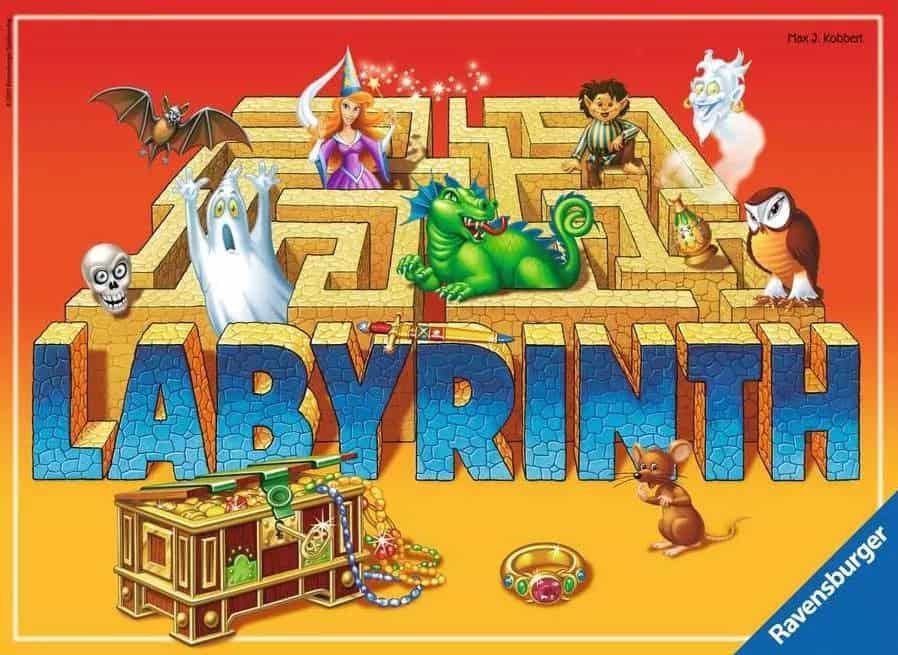
Age: 8+ (Community 6+) Players: 2-4 Time: 15-30 minutes
The fun-for-the-whole-family classic board game Labyrinth is a fast-paced small group game that board gamers have loved since 1986 when it first released. Most games run between 15 and 30 minutes, and it takes about 10 minutes to learn how to play. Two to four players engage with the modular board to create point-to-point movement in their route building play.
As the title Labyrinth suggests, the game uses tile laying for its maze-manipulation game mechanics, along with tile laying to adjust the existing permanently affixed tiles on the board which create a maze to pass through. Via this series of mazes, players must locate and attain treasures as quickly as possible, and, ultimately, the first person to collect their allotted treasures wins. The game comes with 44 tiles which players use to create pathways to fill out the maze game board. Tiles feature a variety of components, including paths and treasure icons. Players move figures along the pathways (current versions of the game use wizard meeples instead of wooden pawns in red, yellow, purple, or green) to mark their movements.
The game is fairly easy to set up and the mechanics fairly simple, yet flexible, so some players have described it as a great “simple” game for kids with mechanics that allow adults to take a more cutthroat approach if they prefer.
Stratego
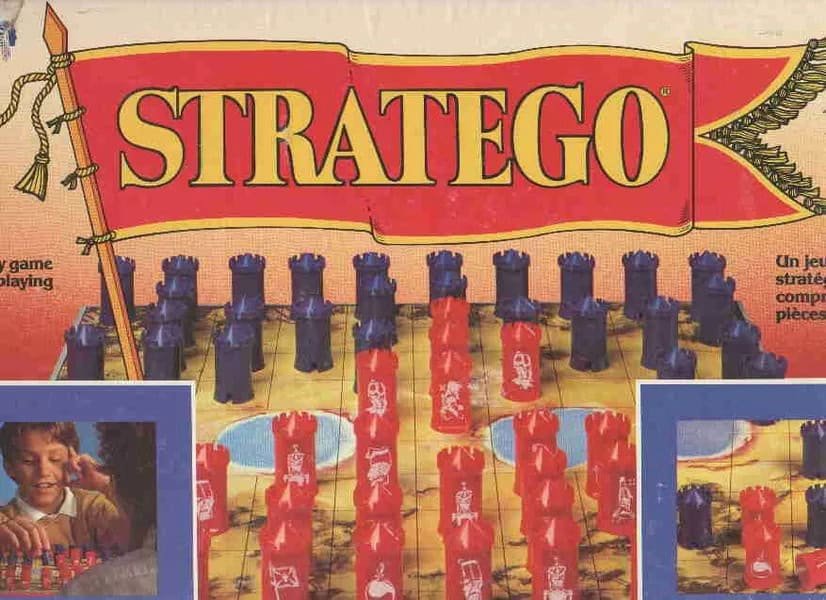
Age: 8+ Players: 2 Time: 45 minutes
Considered a “hidden tactics” board game, and probably one of the best known of its type, Stratego is one of those classics that launched after World War II, partially in reaction to the war. Derived nearly directly from an old French game known as L’Attaque, Stratego comes as a wargame/spy-esque strategic game using bombs, armies, and flags to engage.
In this classic board game, the battlefield is found on the board game and your objective is to use your army of men and bombs to protect your own flag and capture your opponent’s for the victory.
During the game, players secretly place armies, bombs, and their flag on the gameboard, with their strategy for war already in mind from the onset. The two-player game encourages you to plan both your defense and offense from the beginning while keeping in mind that your opponent will do the same. Once armies are in place, the game ensues. When you’re close enough (one space away), you can attack your opponent. You both declare the ranks of the pieces present and whichever piece is ranked lower is captured and removed from play. Because the ranks are unknown, you must control and carefully maneuver across the board, keeping track of your opponent’s losses and gains while paying attention to your own – especially as bombs may be nearby. The first player to capture their enemy’s flag wins. But since you can’t see the flag, you may wind up with a very short game or a rather long one.
Conclusion
These classic board games, ranging from precisely 25 years old to nearly a century old (or older!) will keep your crew playing for hours. Grab card, dice, tile-laying, war, worker management, or combo games for a great collection your friends will love gathering to play. You’ll find the games available in new iterations and variants, as well as classic re-releases across the annals of the internet, so consider your preferred aesthetic, style, and fandoms even, before purchasing your best oldie-but-goody games.
FAQ
What makes a board game “classic” according to this article?
A board game is considered classic if it’s 25 years or older, meaning it would have been played by parents or grandparents in their youth.
Which game has the shortest playing time among the classics listed?
Labyrinth, with a playing time of 15-30 minutes.
What age range are most of these classic games suitable for?
Most games are recommended for ages 8 and up, though community ratings sometimes suggest they’re suitable for younger players.
Which game was created as an alternative to card games under Communist rule?
Rummikub was created by a Romanian toothbrush salesman when card games were outlawed under Communist rule.
What’s the average player count for these classic games?
Most games accommodate 2-4 players, with some supporting up to 6 or 8 players.









